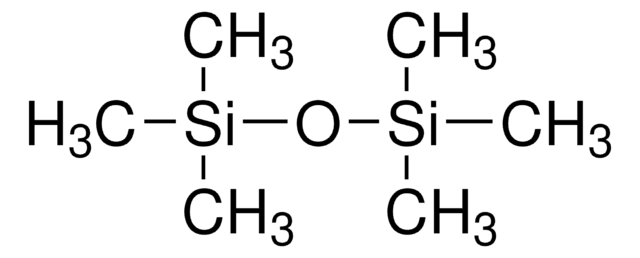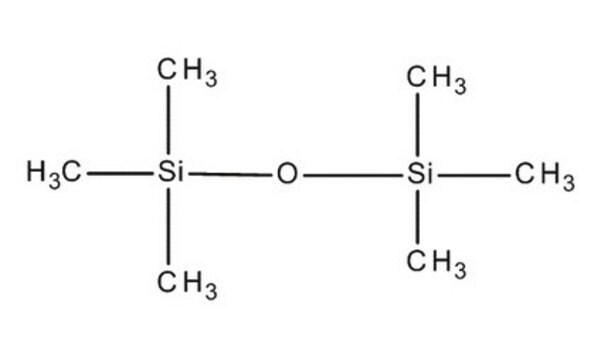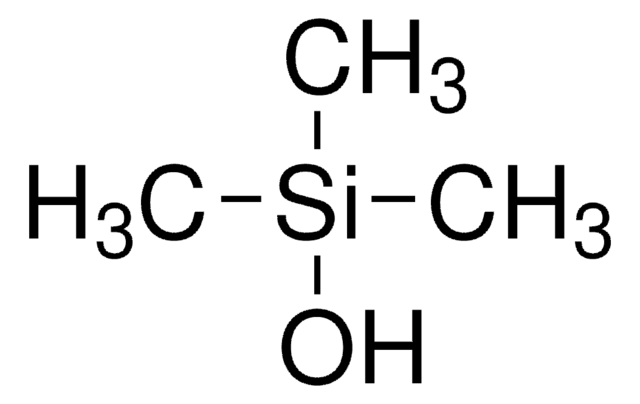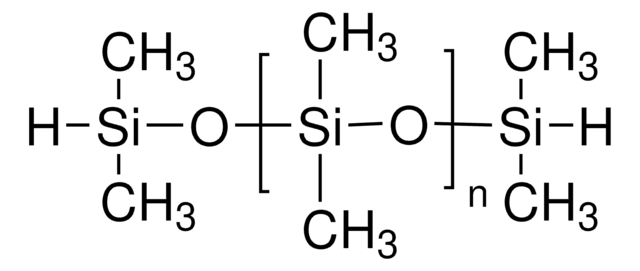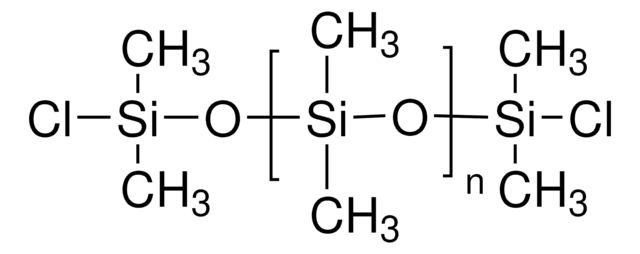469300
Hexamethyldisiloxane
viscosity 0.65 cSt (25 °C)
Synonym(s):
Poly(dimethylsiloxane), HMDSO
About This Item
Recommended Products
vapor density
>1 (vs air)
Quality Level
refractive index
n20/D 1.377 (lit.)
viscosity
0.65 cSt(25 °C)
bp
101 °C (lit.)
mp
−59 °C (lit.)
density
0.764 g/mL at 20 °C (lit.)
SMILES string
C[Si](C)(C)O[Si](C)(C)C
InChI
1S/C6H18OSi2/c1-8(2,3)7-9(4,5)6/h1-6H3
InChI key
UQEAIHBTYFGYIE-UHFFFAOYSA-N
Looking for similar products? Visit Product Comparison Guide
Application
- Superhydrophobic Surface Coating: Studies the application of hexamethyldisiloxane coatings on fabric masks via plasma treatment to achieve superhydrophobic properties, enhancing the masks′ resistance to moisture (M Prado et al., 2022).
- PECVD for Thin Film Coatings: Describes the use of hexamethyldisiloxane in plasma-enhanced chemical vapor deposition to create thin film coatings, exploring the effects of using extremely asymmetric capacitive RF discharge (Ž Gosar et al., 2020).
- QCM-Based VOC Sensors: Hexamethyldisiloxane thin films are used as sensitive coatings for quartz crystal microbalance sensors, enhancing their capability to detect various volatile organic compounds (M Boutamine et al., 2014).
- Hydrophobic-Hydrophilic Films: Explores the polymerization of hexamethyldisiloxane using atmospheric pressure plasma jets to create films with tailored hydrophobic and hydrophilic properties (M Bashir, S Bashir, 2015).
Signal Word
Danger
Hazard Statements
Precautionary Statements
Hazard Classifications
Aquatic Acute 1 - Aquatic Chronic 1 - Flam. Liq. 2
Storage Class Code
3 - Flammable liquids
WGK
WGK 2
Flash Point(F)
21.2 °F - closed cup
Flash Point(C)
-6 °C - closed cup
Personal Protective Equipment
Choose from one of the most recent versions:
Already Own This Product?
Find documentation for the products that you have recently purchased in the Document Library.
Customers Also Viewed
Articles
Advances in the area of soft optoelectronics, with a focus on the development of organic optoelectronic devices on shape memory polymers (SMP) is discussed.
Our team of scientists has experience in all areas of research including Life Science, Material Science, Chemical Synthesis, Chromatography, Analytical and many others.
Contact Technical Service